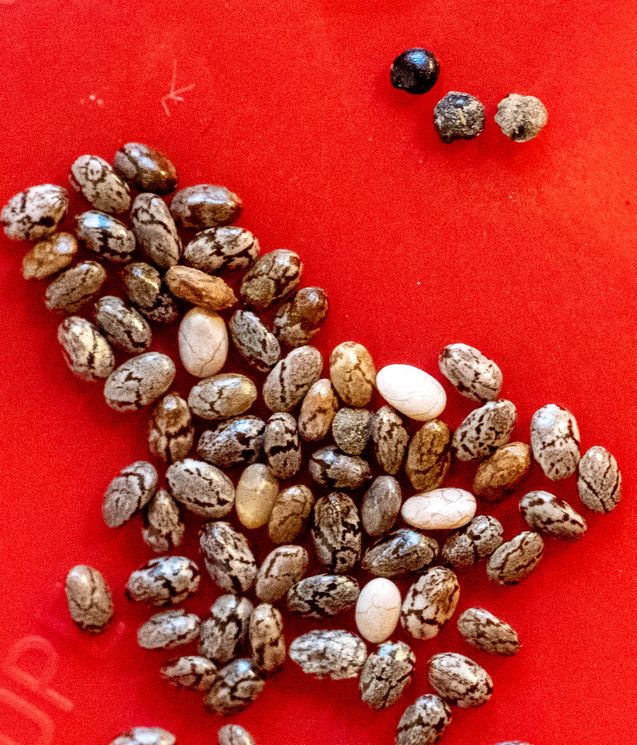Exactly which species they are I don't know, but it will probably depend on where the chia seeds are sourced from in the world. For a possible ID you would need to provide more close-up photos of the seeds, showing them opened out and showing the bit that attaches to the seed pod. They could well be one of the many common Brassica species that are weeds and/or crops of many places, given their small round shape, but this is by no means certain.
What they are is contaminant species that have either been planted in the same fields as the chia previously (i.e. crop rotation), or have grown adventitiously as a weed species - either already present in the fields or transported and incidentally planted with the chia.
The reason they are in your chia is that the sorting and cleaning process can't sort them out from the chia seeds in any meaningful, cost-effective manner.
As to safety - Without an ID it is almost impossible to say. However, if the producer hasn't gone to great lengths to remove them, they probably aren't likely to cause you harm, at least at the level at which you find them in the chia.

